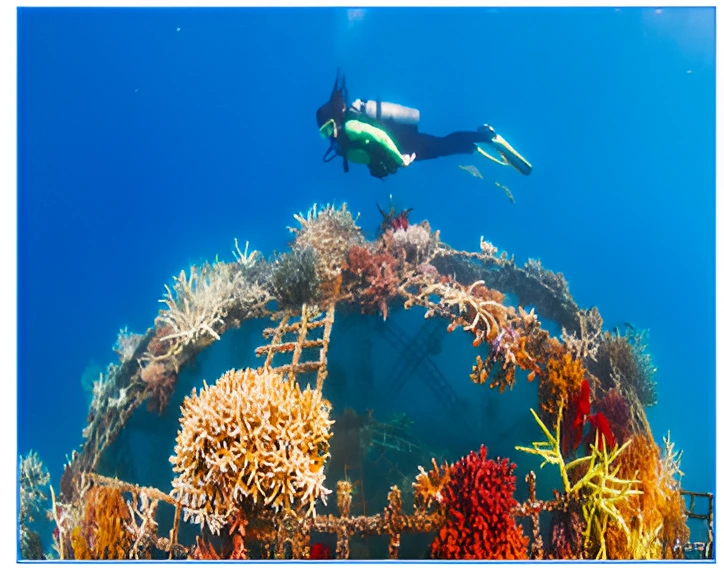Context:
The Union Minister launched the project of depositing artificial reefs in the seabed in Vizhinjam, Thiruvananthapuram to boost the fish population.
Project for Artificial Reefs
- Phase I of a nationwide campaign is launched in Kerala whereby 6,300 artificial reefs will be laid in 42 fishing villages from Pozhiyur to Varkala in Thiruvananthapuram district.
- Kerala State Coastal Area Development Corporation will implement the project with technical assistance from the Central Marine Fisheries Research Institute.
Pradhan Mantri Matsya Sampada Yojana
- About: It is an umbrella scheme to bring about Blue Revolution through sustainable and responsible development of fisheries sector India
- Timeline: With an estimated investment of Rs. 20,050 crores to be implemented over a period of 5 years from FY 2020-21 to FY 2024-25.
The Central Marine Fisheries Research Institute
- Established: It is a leading tropical marine fisheries research institute established by the Government of India on February 3rd 1947 under the Ministry of Agriculture and Farmers Welfare and later it joined the ICAR family in 1967.
- Mandate: To Monitor and assess the marine fisheries resources of the Exclusive Economic Zone (EEZ) including the impact of climate and anthropogenic activity and develop sustainable fishery management plans.
|
About the Artificial Reef Campaign
- About: To deploy artificial reefs in a total of 3,477 fishing villages in the country to promote sustainable fisheries and livelihood
- Aim: To create an artificial habitat on the seafloor, creating favorable conditions for fish breeding and their sustainable survival.
- Nodal Agency: Union Department of Fisheries
- Implementing Partners: A joint initiative of the Central and State governments the project is being implemented under Pradhan Mantri Matsya Sampada Yojana with technical assistance being provided by The Central Marine Fisheries Research Institute
- Budget: It is a Centrally Sponsored Project with total cost of 13.02 crore, with 60% being provided by the Central Government and 40% by the State government.
Artificial Reef Technology
- About: Artificial reefs are sheltered human-built structures placed on the seabed as a substitute for natural habitats. With a fixed scientific design, it functions as a self-sustaining production system on the seabed.
- Deployment: CMFRI has deployed the Technology in 132 locations with a total area of 3.7 lakh square meters across the country, in the coastal waters of Tamil Nadu, Andhra Pradesh, Gujarat, and Kerala on an experimental basis.
 Outcome:
Outcome: -
- Enhanced fish availability to small-scale fishers at lower operation costs
- 17% to 30% increase in fisheries was observed from locations where the reefs were already deployed.
- It will discourage bottom trawling in the near shore areas, helping the marine environment regenerate and small-scale fishers get a higher catch.
- Over 300 species coexist in a settled artificial reef habitat. The commercial varieties being attracted to the reef include breams, cobia, sea bass, rabbit fish, mackerel, trevallies, and queen fish etc
Must Refer: Harnessing the Potential of Fisheries Sector in the Marine States
Natural Reef
- The coral reef is the most familiar type of natural reef.
- A coral reef is an underwater ecosystem characterized by reef-building corals.
- Reefs are formed of colonies of coral polyps held together by calcium carbonate.
- It is one of the most biodiverse ecosystems on Earth, supporting various marine life.
- They are also incredibly important to humans, providing coastal protection, food, and income from tourism and fisheries.
|
Additional Information: Artificial Reef (AR)
News source: News on AIR
![]() 18 Jan 2024
18 Jan 2024
 Outcome:
Outcome: 